Column If you can’t take it anymore: Stop-gap Measures for Herniated Disc Pain and Numbness
Herniated discs are one of the most common spinal conditions. When a lumbar disc herniation occurs, symptoms may include back pain, buttock pain, leg pain and numbness.
In this article, we will discuss stop-gap measures for herniated disc pain and numbness.
What is disc herniation?
Intervertebral discs consist of 2 parts, with the annulus fibrosus encapsulating the nucleus pulposus.
Genetic factors, aging, and the strain of everyday life can cause the annulus fibrosus to crack, and the nucleus pulposus to protrude from it, damaging the disc in the process. This condition is what is called disc herniation. A herniated disc in the lumbar region is referred to as lumbar disc herniation.
Statistically, disc herniation is most likely to occur in the disc between the 4th and 5th lumbar vertebrae, or in the disc between the 5th lumbar vertebrae and the sacrum.
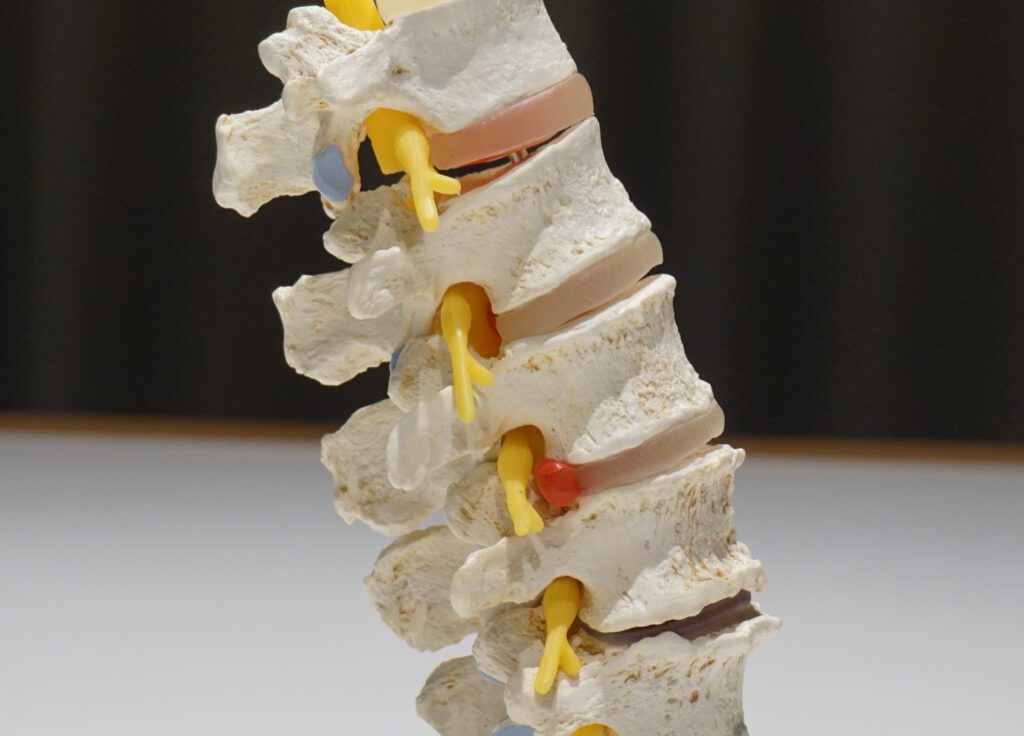
Symptoms of disc herniation
The main symptoms of a lumbar disc herniation are back pain, and pain and numbness in the buttocks and legs. Typical symptoms of a herniated disc in the lower back include sciatica (pain running from the buttocks to the back of the thigh).
Depending on which disc the herniation is located, the location of the symptoms in the lower extremities will vary. In the case of a disc between the 4th and 5th lumbar vertebrae, pain and numbness will occur from the outside of the calf to the toe, while in the case of a disc herniation between the 5th lumbar vertebra and sacrum, symptoms are from the back of the knee to the back of the foot.
If the nerves become strongly compressed, symptoms may include difficulty urinating or passing stools, or even incontinence.
In the case of a herniated lumbar disc, pain may be relieved when the back is extended or when sleeping, but pain and numbness may be more intense when the back is rounded or bent over due to pressure on the nerve.
Symptoms for disc herniation can either be acute or chronic
Symptoms for lumbar disc herniation are either acute or chronic.
The acute type occurs when lifting a heavy load too quickly, or when sneezing. The pain may be so severe that the patient is unable to walk, but the symptoms will then gradually subside.
If left untreated, the herniated disc condition will deteriorate over time, the pressure on the nerves will get worse, and the pain will eventually become chronic.
Stop-gap measures for pain and numbness from disc herniation
The following are some of the ways to deal with pain and numbness from a herniated disc.
Rest
If pain or other symptoms are severe, rest and immobilize the lower back with a supporter or corset. This will relieve the compression of the nerve caused by the hernia and reduce pain in the process.
Cool the affected area.
If you feel heat radiating around your painful lower back, it means that an inflammation is ongoing. In this case, cooling the affected area is an effective way to relieve the pain of the herniated disc. Since inflammation is occurring around the painful area, warming the area may worsen the inflammation and exacerbate the pain. Avoid heating the affected area for the first 3 days after the symptoms appear, by avoiding baths for example.
Oral Medication
Pain medication can also relieve the pain and numbness of a herniated disc.
Because it may take time for the symptoms to disappear, medication may have to be taken over a long period of time.
If you have a pre-existing medical condition, there may be restrictions on the medication you can take, so be sure to discuss this with your doctor first.
Maintain proper posture.
If you are experiencing pain due to a herniated disc, you can expect relief if you make sure to maintain a good posture. When sitting for long periods of time, it is best to use a cushion around the lower back and adopt a posture that does not put any strain on the lower back. Stand up regularly or walk a little, and avoid sitting for long periods of time.
Stretching
Stretching is another effective way to reduce pain and symptoms.
When stretching, it is important not to overdo it and stay within a comfortable range as far as pain is concerned. If symptoms increase after the stretching, immediately consult a medical specialist.
〇 Stretches that relieve pain
1. First, lie with your stomach on the floor and with your arms under your face, and breathe deeply and slowly for about 3 minutes to relax.
2. Still facing the floor, place a pillow, cushion, or other soft object under your chest and lean back while taking deep breaths for another 3 minutes.
3. Raise your head, place your elbows on the floor, and take deep breaths for 3 minutes while slightly lifting your upper body.
4. Slowly extend your elbows with your arms, gradually raising your upper body to the point where it feels comfortable and bend over at the waist.
※ Hold that position for 5 to 10 seconds, then return to position 3.
※ Repeat 10 times.
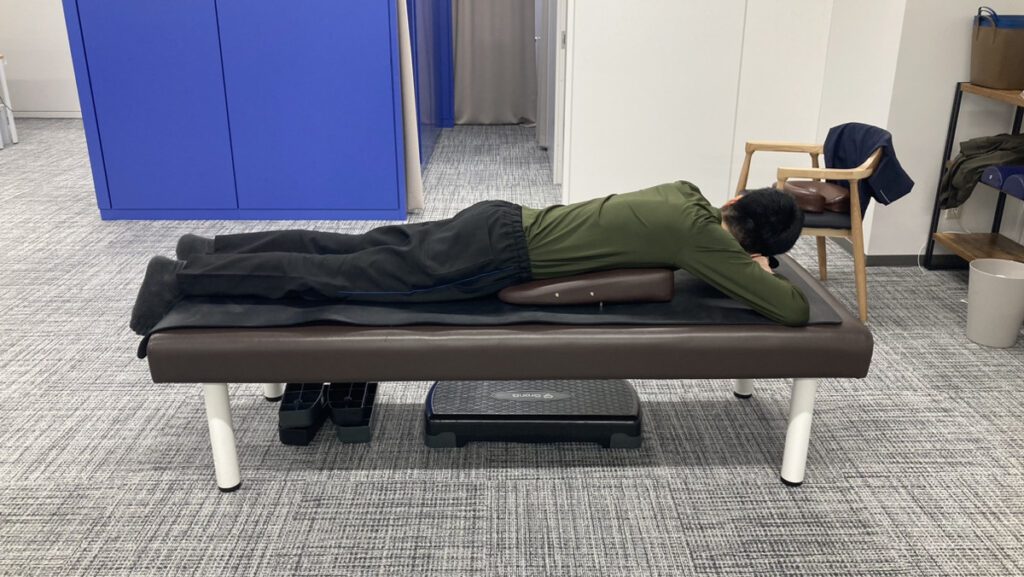
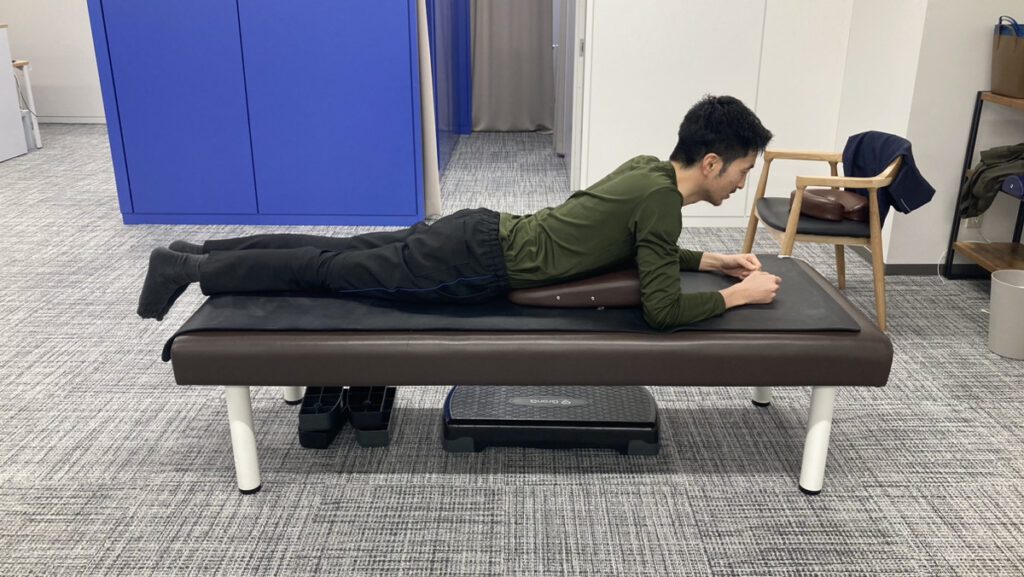
〇 Stretching the lower back while lying down
Lie on the floor on your back with both knees up over your stomach.
2. Grasp both knees with both hands, raise the knees and slowly bring them closer to your chest.
3. Breathe deeply for 6 seconds, feeling your knees come closer to your chest and your lower back stretch.
4. Release your hands from the knees and return to position 1.
※ Repeat 3 times.
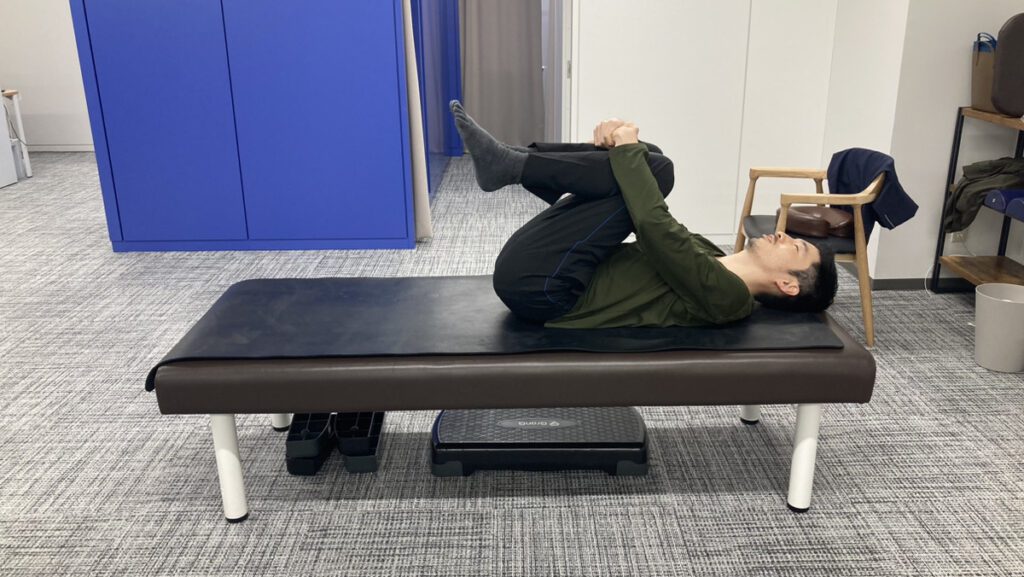
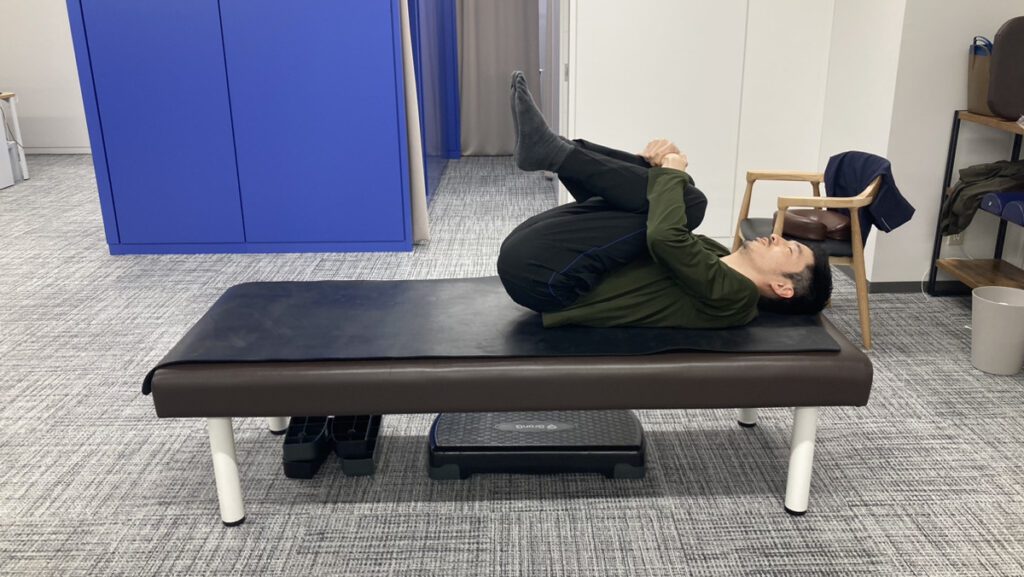
〇 Drawing
Drawing is an effective technique used for relieving lower back pain by strengthening the inner muscles such as the transversus abdominis and the multifidus muscles that are nestled deep within the body.
1. Lie on your back and raise your knees up.
2. Draw in your chin lightly and lengthen your spine.
3. Inhale through the nose, then exhale through the mouth while keeping your body still.
4. As you exhale, pull your navel in towards your back, and visualize lifting it towards your chest.
5. When inhaling, be careful to keep your navel as flat as possible and to breathe in through the chest .
※ Try doing this for a total of 10 times.
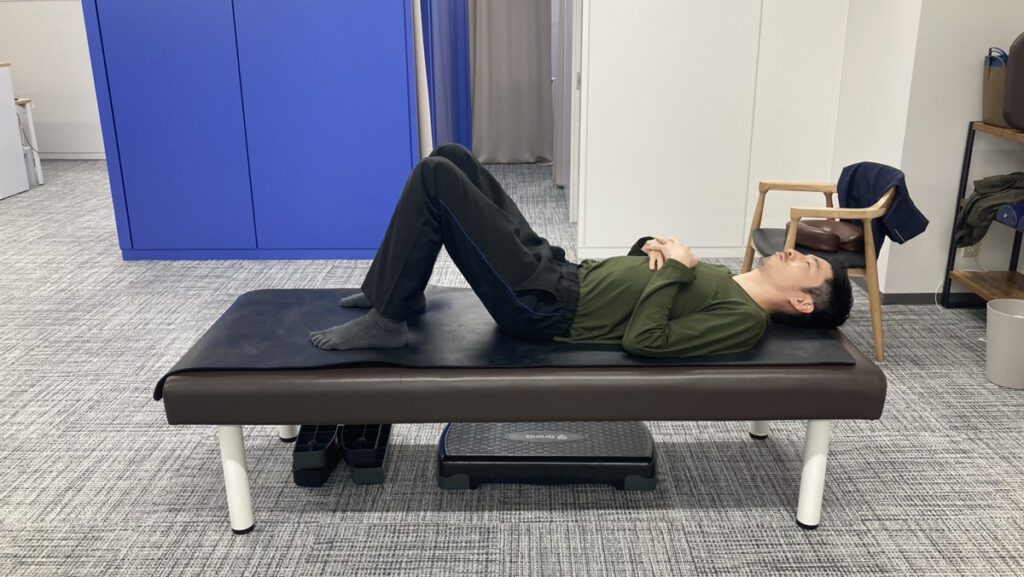
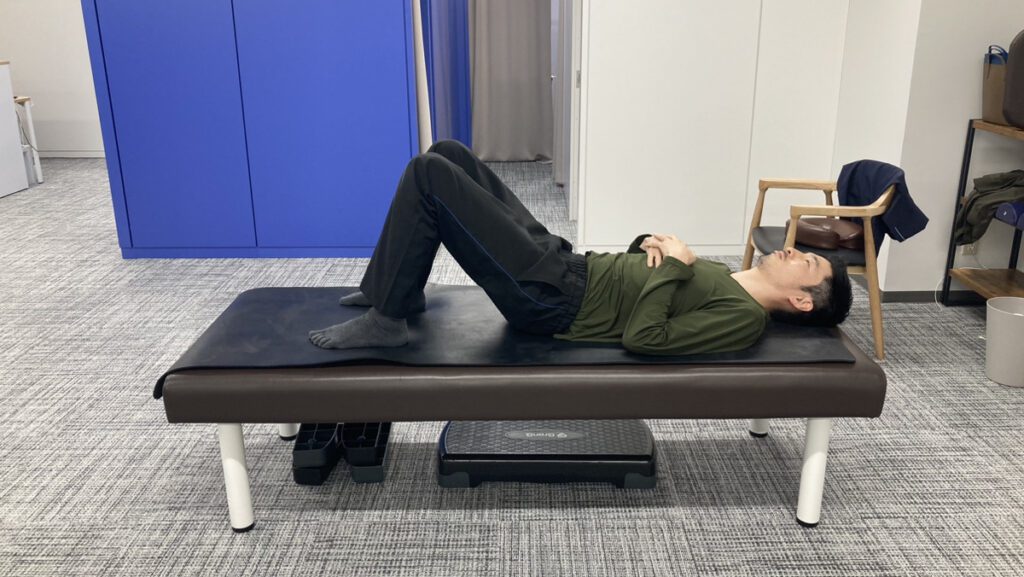
Our treatment for disc herniation: The Cellgel method
Although the above remedies may be effective in temporarily relieving the symptoms of a herniated disc, if the damage to the disc that caused the herniation is not healed, the symptoms will eventually reappear.
That is why our clinic offers the Cellgel method, a treatment that can thoroughly repair the damaged discs.
With our Cellgel procedure, a material is injected to fill the cracks in the discs, which then turns into a gel that fills in the cracks, thus providing a fundamental cure. It is characterized by the fact that the volume of the disc is not reduced, and the material remains in the disc as a gel-like implant after treatment, thus preserving the disc.
If you have been diagnosed with disc herniation and are suffering from back pain and numbness, please consider a consultation at our clinic.



